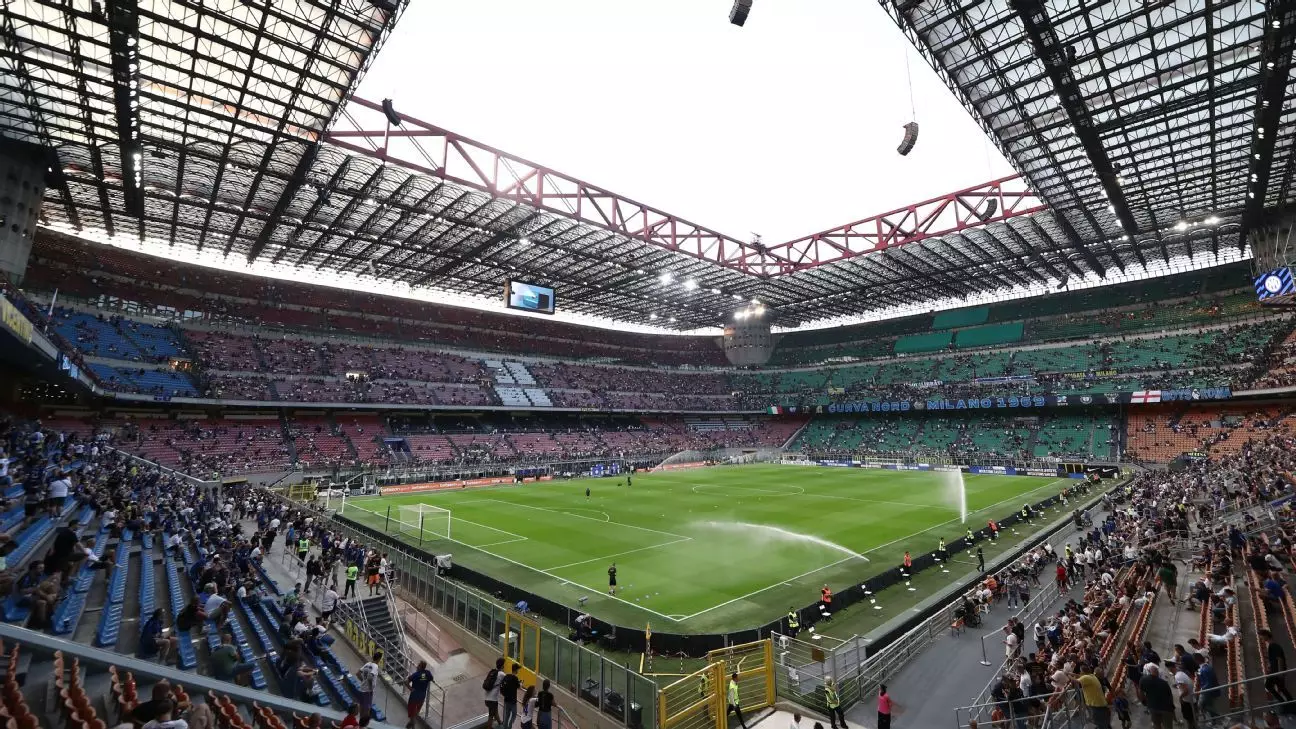The ongoing saga of AC Milan and Inter Milan’s shared home at the San Siro stadium continues to evolve as both clubs reject the idea of renovating the iconic venue. In a recent announcement, Milan’s mayor, Giuseppe Sala, shed light on the clubs’ intentions to build a new stadium in the vicinity, citing financial impracticalities involved in upgrading the historic ground. This shift in strategy underscores a broader trend within professional sports where aging facilities are being reconsidered in light of modern demands.
The decision-making process surrounding the San Siro reflects a significant push for increased revenue streams from both teams. With financial pressure mounting, the clubs recognize that their current operational model is lagging behind European counterparts, who often benefit from state-of-the-art facilities that drive fan engagement and generate additional income. By constructing a new joint stadium, both AC Milan and Inter could enhance their matchday experience, attract larger crowds, and generate more from non-matchday events.
The concept of pooling resources for a shared venue shows foresight and collaboration, a departure from previous plans that suggested individual stadiums. This cooperative approach could also appeal to local authorities and stakeholders, presenting a unified vision that aligns with community interests.
Despite the ambitious plans, the path to creating a new stadium has not been straightforward. The initial proposals fell victim to political resistance and the complexities of heritage regulations that safeguard the historic San Siro. The stadium, which has witnessed countless memorable moments since its inception nearly a century ago, is steeped in tradition. Balancing the desire for modernization with the preservation of architectural heritage poses a challenge for both clubs and municipal authorities.
During his address, Sala emphasized that discussions surrounding the stadium’s future have been complicated and lengthy. This intricacy highlights the fact that governmental processes, especially in Italy, often intertwine with sports developments, requiring careful negotiation and public consensus.
With the clubs now controlled by U.S. investment firms—RedBird Capital for AC Milan and Oaktree Capital for Inter—the financial backing is likely to create opportunities that were previously unavailable. The firms are seasoned in leveraging sports franchises to maximize profitability, hinting that favorable solutions regarding the stadium project are on the horizon.
The clubs have taken a pragmatic approach by seeking a thorough evaluation of the existing facility and the potential of the surrounding area. This comprehensive assessment will aid in understanding the perceived value and feasibility of the new stadium project, alongside clarifying the regulations regarding heritage protection.
While the decision to abandon San Siro’s renovation may evoke wistful sentiments among fans, the collaboration between Milan’s most prominent football clubs signals a forward-thinking strategy aimed at revitalizing their competitive edge. The endeavours to create a modern stadium encapsulate a belief in progress, juxtaposed with respect for the rich sporting history that the San Siro represents. The narrative of AC Milan and Inter continues to unfold as they navigate the intersection of ambition, heritage, and community identity.
